With our next X-Ray Technician Program / Class starting on October 16th, we wanted to take a moment to speak with our very own Adam Cooper, in order to get an understanding and insight as to what it’s like to work as an X-ray Technician in California, as well as learn about the clinical internship portion of the x-ray training offered at Modern Technology School…
Spotlight on Adam Cooper, XT, X-ray Instructor/Radiation Safety Officer
Adam’s background:
- Graduate of Modern Technology School, Anaheim, CA. in X-ray Technology
- ROP, Anaheim, CA. Medical Assisting Program
- CDPH-RHB X-ray Technician (XT)
- Member of the American Society of Radiologic Technologist (ASRT)
Adam, thank you for meeting with me. Can you tell me a little bit about your role at Modern Technology School?
I make sure that all the doctors/physicians at clinical locations are aware of the state requirements and our requirements for training. I synchronize with clinical coordinators to
ensure the students are getting what they need with regards to the number and types of exams. We also ensure that people are passionately training the students, not just using them as another ‘warm body’ in the clinic — we want there to be a lot of training and for the students to come out of the clinical internship portion of the program feeling confident and well-trained — ready to take on their new professions.
We also have to ensure that the clinics are compliant with regards to following state laws, and the state wants to make sure it’s a competent facility that will thoroughly train our students. As a Radiation Safety Officer, I handle the radiation protection & radiation safety-end of the x-ray program with the clinics. I have a working rapport and history with the x-ray techs at the clinical locations, so I’m able to act as a go-between. This is helpful because each clinic and office will have their own set of individual rules, so it’s important that we keep up with them in order to ensure our students’ success.
Talk to me about your experience and background within the Healthcare and X-Ray Technician Education field
Of course. I started out as a File Clerk within a family practice in Orange County, working in medical records. I really enjoyed it and saw how other people (X-ray technicians) were happy to show up to work each day in order to help people, and I’ve always had a passion for helping people… whether it was working in public safety, or in medicine. I ended up going through ROP (Regional Occupational Program) at the time, which offered an 11-month program for medical assisting. This was while I was still working as a File Clerk at the family practice, so this gave me the opportunity to learn the medical terminology for both front & back medical office. Once I graduated and I was able to become a medical assistant in California, that same clinic I was working at, gave me an opportunity to work in the back office, and I worked there for about a year before moving forward with my Healthcare career.
While working as a medical assistant / back office there, I started seeing Modern Technology School’s students begin coming through my office, as part of their clinical internship. Now this was before I worked here (at Modern Technology School), and it really intrigued me. I had the opportunity to speak to them and work with them quite a bit, and really developed an interest in the X-Ray portion of their training within the family practice. Now this was back 2005, so Modern Technology School was moving to Fountain Valley at the time. As soon as they relocated closer to me, I took that as a sign and jumped on the opportunity to attend the school and study to become an X-Ray Technician in California as soon as I could.
What was also really interesting, was that before I moved on to wanting to become an X-Ray Tech in California, I actually worked with Modern Technology School students at my clinic for over 7 years. This gave me a unique vantage-point and helped me to understand what it takes to succeed as an X-Ray Technician, as well as what skills were needed in order to successfully complete the clinical internship for X-ray techs. For instance, some students were more independent throughout their training at the clinic, while others required more patience, and slower, focused instruction. I was able to see both sides of the X-Ray Technician program this way, and it’s also how I met the staff and faculty at Modern Technology School.
What makes the X-ray program unique for students considering a career in Radiology/X-Ray
The X-Ray Technician program at Modern Technology School is very unique. This is due primarily to the way we cross-train our x-ray students as medical assistants. It reminds me a lot of public safety — firefighters for instance — a lot of them will go out and cross-train as paramedics and EMT’s. It makes them more useful and attractive to the cities and counties hiring them. It’s the same thing here — you get that cross-training as a medical assistant, and you’re that much more attractive to employers looking to hire an x-ray technician in California. Hiring an MA/X-Ray Tech is also very cost-effective for Healthcare employers, which is another reason we do the cross-training — we’ve evolved the program to match up with what more and more Healthcare employers are looking for from XT’s. This in turn creates more value for our students and helps them become more attractive to prospective employers.
There are a lot of Healthcare corporations that are moving to California from back east as well. Now on the East Coast, they don’t really have many (or any) X-Ray Technician / Medical Assistant positions. In fact, many of them utilize an LVN/RT, which is very costly to the employer. As many of these corporations have made their ways into the California, they’ve realized how valuable it is to have an MA/X-Ray Tech working for them versus the LVN/RT’s they were used to working with back east.
You were a graduate first and foremost, what did you find useful about the X-ray Tech Program and what portions/modules did you enjoy most?
Everything that you get to put to work once you graduate from the X-ray Technician program and get out there in the field. I loved the osteology, learning about bones, it was fascinating. I enjoyed learning about how X-Ray Technicians use different positioning in order to take and capture different types of x-rays/images. Also, figuring out the small details and learning what to say to patients and work with them professionally — explaining things properly and helping keep them safe, providing instructions, and ensuring you’re doing right by them.
It’s very different from what may be considered a very traditional education, where you’re learning things you may not really utilize in your field of choice. Instead, we used everything we learned, and it’s fascinating coming back as a teacher now, because I get to teach all of that useful stuff that I enjoyed and use on a daily basis.
Now that you’ve been on both sides, what do we offer that other schools don’t at this level?
It’s hard to compare us to other schools in Orange County; we are very unique in how we offer both X-Ray Technician training as well as the included Medical Assistant certification under one program. We’ve been doing it for so long here, since 1981 and we’ve had the opportunity to work with so many different students throughout that time. There is a great deal of book-work involved, which isn’t boring, and we also train with an enormous amount of hands-on. Our students get to work closely with instructors and faculty, and our classes aren’t overloaded.
We believe in more quality instruction and so class sizes are kept small, so our x-ray students have a better chance at absorbing the material as well as working hands-on with actual field equipment. If they have challenges, the instructors are always there to coach them through it, and of course the rest of team that makes up the entire package is phenomenal — it’s tough to beat here in Orange County, especially considering all of the impacted radiology programs you hear about.
Where would an XT generally will find work upon graduation/exam completion?
XT’s who cross-train as Medical Assistants will generally find work in clinics, urgent cares, worker’s compensation offices, industrial medicine, internal medicine, family practice, sports medicine, orthopedic surgeon offices, you name — it’s a pretty broad spectrum of where you can find work as an X-Ray Technician in California. As far as working routines, as an x-ray tech, you have a lot of choices with how you want to build your schedule. X-ray techs can choose to work graveyard, 2nd-shift, mornings — it’s very flexible here in California.
I’ve worked “sleeper-tech” where you work 7pm to 7am on weekends, and the clinic actually has a living-room setup, where you can take naps during your shift… when a patient comes in, say at 3am and they ring the bell, you come out and you take care of the patient and you’re able to go back to sleep until the next one arrives. Obviously that’s a unique situation and shift, but I’m trying to illustrate that there are a lot of options for different types of employment for x-ray technicians in California. It really depends on what you like, and it’s nice to know that those options are out there, one to match each X-ray tech’s personality and needs.
It’s also interesting in that there are so many employment options for X-ray technicians in California, as it’s not really like that for some of the other positions within the radiology field right now. There are impacted classes at the CRT or rad-tech level, and a lot of these junior colleges have 5-6 year wait lists for their radiology programs. They’re also having a hard time placing students in clinical internship because the programs are so impacted. Furthermore, they’re not building new hospitals, like they are urgent cares and clinics, where x-ray techs work. There are also a good number of doctors/physicians that are coming out of school and creating their own practice, or taking over the family practice — these are all great opportunities for the X-ray technician.
Walk me through a standard day in the life of an X-Ray Technician in California
Once you get in, you grab your clinic schedule, and see what your day is going to consist of. You’ll probably then go on to turn on your x-ray machines and then go through your morning routine while they warm-up. I then wipe down all my equipment, as I’m not sure who was there the night before — even if it was me. I want to always protect my patients and ensure that my room is clean, that I’m making a great first impression on the patients when they enter. I go through and make sure all of the trash cans have been emptied, that my lead aprons are ready for use, and check supplies before my first patient comes in. Preparation is key in Healthcare and working as an X-ray technician. If I see that specific patients are coming in, or ones that have specific needs, I can also prepare for my day in that way as well.
As part of my daily routine, of course you’ll be taking x-rays and filling in with other physicians as necessary. Maybe the clinic will assign you to one physician, where you take x-rays for just one doctor, or you’ll work with multiple physicians. It really depends. Some clinics have multiple x-ray techs and medical assistants, others employ only one or two with a broader range of skills — it really depends on the type of medical office or clinic you choose to work for. This is really nice for the x-ray technician, because you can find a clinic that suits your needs and work-flow.
For instance, an X-ray technician’s daily routine at an urgent care, will primarily be working with patients who have a variety of non-life threatening emergencies. People with sore throats, urinary tract infections, cuts and lacerations, that type of stuff. As far as family practice goes, the x-ray tech will probably be working more with patients receiving their diabetes checkups, people with COPD or CHF — conducting routine x-rays and follow-up x-rays… so it really depends on the field and work that you like and enjoy. If you work for an orthopedic surgeon’s office, your daily routine will consist of no chest x-rays, but more casting, splinting, follow-up x-rays for post and pre-op surgeries, etc. Lastly, if you work as a medical assistant/x-ray tech for an industrial medicine office, your daily routine will consist mainly of urinalysis and drug screens, injuries, physicals, doing EKGs… and this is where being a great medical assisting pays off. You’ve got to be a good MA to be a great XT, which is another reason the included cross-training is important.
What is the relationship between the X-ray Technician and the Physician?
It’s a close relationship. The physician will rely on the X-ray tech to take really clear x-rays that are easily readable and identifiable. While you wouldn’t usually be reading the x-rays, you may help point things out to them in order to ensure the physician is confident in their diagnosis and what they see. And for instance, if the physician is not confident in the image, they will most likely send that image out to a radiologist, who will look at the x-ray and send your clinic back a report with their findings.
Your relationship as an X-ray technician working with the physician is important. A lot of the physicians are not supervisor/operators so they don’t use the x-ray equipment, or know how to use the equipment, they know how to read the x-rays you create, as well as what types of x-rays to order. If the physician is a newer doctor, and they may not be 100% confident in their diagnosis, they may even rely more heavily on you as an x-ray tech, and so your work and that relationship is paramount to both the clinic and ultimately the patient.
Walk me through some of the highlights of working in the field as an XT – what is most enjoyable about the job to you?
I’ve worked with orthopedic surgeons, in a family practice, internal medicine, and urgent care clinics. I think by far, my favorite is working as an X-ray technician within an urgent care. You’re able to help a large amount people and to me that’s what it’s all about. I’m in this field because I care about people and want to help them. Because of the number of incoming patients, it’s rarely boring and you’re able to serve more people, as well as get a lot of gratitude from the people you help.
When I worked in family practice, it was different because doctors/physicians and the clinical team were helping patients in small increments throughout the course of their treatment. So it was very gradual help, and small steps towards an ultimate goal/solution. But when that patient comes to see me at an urgent care, it’s different. They need something done right away and we’re able to provide that instant gratification for that patient, and to me that’s what’s most important. I get that “thank you for helping me,” or “I feel so much better because of you,” and we tell them that if they have any other issues, to follow up with their regular physician… but we’re able to sort it out for them quickly and provide instant gratification and relief for the patient. That’s powerful and special.
How has the X-ray Technician job changed if at all, in the last few years, or when you first started?
Technology has changed a lot. About 8 or 9 years ago, when Arnold Schwarzenegger was governor, a bill was signed that allowed X-ray technicians to process images digitally. Before that, you had to be an RT or rad-tech, because it wasn’t written into law. If that bill didn’t get passed, it was going to put a lot of XT’s out of a job, because the only thing we could process was film, using chemicals. After the bill was passed and it became a law, we put it into the curriculum and X-ray technicians now take digital x-rays, it’s a huge step in the right direction in California.
The change in Digital X-ray is also tremendous. When digital x-rays first showed up, back in the 1970’s, we only had about 250 shades of grey in each x-ray. We are now at over 20,000 shades of grey, providing amazing clarity, detail, contrast and a beautiful image which helps with quick and accurate patient diagnosis. The most important aspect of all of the detail you can now find in those digital x-rays is in the chest x-rays. We have certain radiologists who are B-readers, who only read chest x-rays for patients coming in with exposure to asbestos, siliceous dust from cement, black lung miners and people who come in with industrial ailments/diseases… this is where digital x-ray has changed lives. Now that technology has caught up with the film/chemical process, the detail is tough to beat, and it’s very useful.
Digital x-ray is one of the modules here at Modern Technology School. We teach strictly digital at one portion of the X-ray Technician program here and it’s integrated into the physics and science of x-ray and radiology. As things change every day, and they eventually phase out the chemical and film portions, we will follow suit and ensure that our students are prepared for whatever the industry and employers demand of them.
How does the included Medical Assistant certification/training fit into an X-ray Tech workload
For an XT to take x-rays for 8 hours a day, would be very unusual. If you didn’t get the medical assisting training, you may be sitting around the clinic an awful lot, and so that’s why we cross-train our students… and why most employers are looking for well-rounded XT’s who have that MA certification. It keeps you busy and you’re able to work on both sides of the office, with several different physicians. Again, you’ve got to be a good medical assistant to be a great X-ray tech. It comes with professional patient care and bedside manner, critical thinking skills, and of course the terminology and a solid foundation in Healthcare. When I started, I started as a medical assistant, and that was really the meat & potatoes of the job in many cases.
Can you walk me through what students learn in Clinical Internship and how long that portion is and when it takes place?
The clinical internship portion of the X-ray technician program starts when students are ready for it. That means once you’re prepared and have learned all your anatomy, x-ray positioning, your patient instructions for each individual exam, and are fully prepared to go out there and take x-rays and work with actual patients (under supervision). Once you get to the clinical phase of our x-ray tech program, you’ll work with an a seasoned x-ray technician who will work hand-in-hand with you. It’s very rare that you’ll find an x-ray tech at our clinical sites who has not worked with students from our x-ray school and program.
We’ve built a rapport with a lot of great Healthcare and medical offices, and most of the time the x-ray tech that you train with at the clinical site is also an alumni from Modern Technology School as well. This is great because they understand the process, they understand what it’s like to be an x-ray technician student, and they are very patient. They’ll walk you through the workflow slowly, they’ll make sure you understand how to do the exams, they’ll walk you through them and watch you work with patients before letting you work on your own. They definitely take you under their wing and you build a trust and relationship with them, which is great.
The clinical internship phase starts at about the last 4 months of the X-ray technician program. It’s 520 hours, and you’ve got different categories of x-rays that you’ll have to take, for a total of 350. However, keep in mind that with an 8-hour day at the clinic and the 520 hours you’ll spend there, those 350 x-rays coincide perfectly with the amount of work you’re doing. It may sound like a lot of x-rays at first, but if you break it down to the weeks and individual x-rays, it really is only a handful of x-rays you’re trying to capture each week, throughout those final 4 months.
Why is clinical internship so important, and why is it important that we offer it as part of the program (as opposed to sending students to find it on their own?)
I think it’s important that both the x-ray techs and the doctors at the clinical sites know what is expected of the training required by the school and the state. For this reason, if the students are forced or asked to go out and find their own clinical internship as an x-ray technician, there’s no way to guarantee they are going to get the same level of education they’d get from a clinical site and office that’s been fully vetted and whom we’ve built a relationship with… an office that understands what’s expected of the student once they graduate and take their exams and begin working in the field as an X-ray technician in California.
If students are asked by other schools to find their own clinical internship, you’ll never be certain as to whether or not they are getting everything they need — not just to succeed, but to qualify based on the licensing needs as well. That’s why we’ve extensively interviewed and worked with the same offices for our X-ray technician student’s clinical internships. We want there to be accountability and reliability, so that our students are protected and well-trained for success in the field, working as an X-ray tech. It also goes both ways — clinics are looking to us as well; they want to train well because sometimes they want to keep the student because of their performance, and so they’ll train really well. We generally use offices that would be a typical job for MA/X-Ray techs, so when students finish their clinical internship, they feel well-prepared and confident when reading the job descriptions for the positions they are applying for.
Any advice for X-ray Techs that are in the clinical internship phase of their program?
I would say, don’t overlook the little things. Mirror the good x-ray technicians who are doing well at the office you’re training at. Do the little things that make a big difference. For instance, you may notice that the needles need to be restocked. It may not be your job, but taking care of those little things makes a big difference — your manager will notice.
Do you have advice for incoming students who are on the fence about a career as an X-ray Technician?
Becoming an x-ray technician is a great starting point for a career in radiology & Healthcare, but also it’s a great endpoint. You make a well-enough living that you’re lucky enough to be able to choose whether you want to stay working as an x-ray tech in California, or advance your career to the next level. There aren’t many positions out there like that; there are some where you’re forced to continue to move to the next level in order to make a good living. As an XT you can choose to stop at the entry-level, but you can also move on to bigger opportunities as well. For instance, as an X-ray tech, you can get more modalities, go into bone densitometry, nuclear medicine, and of course making the transition to advance into the CRT or rad tech level. I’ve also seen many XT’s advance into management positions at clinics/offices.
Now that you’re on the faculty side, what stands out most about our staff/faculty/instructors at Modern Technology School?
Everyone here has worked in the field. We’re passionate and love our careers. We enjoy what we do. I enjoy what I do. We wouldn’t be here if we didn’t. I find it very fascinating. Radiation is very fascinating to me.
Any final notes for current/prospective X-ray technician students coming from your years of experience?
Make sure you’re doing what you love. Enjoy what you do, because that’s key. I enjoy what I do — I didn’t think I’d be on the education-side of things when I started, but this is what I love. Find what you love and be good at what you do!
[End]


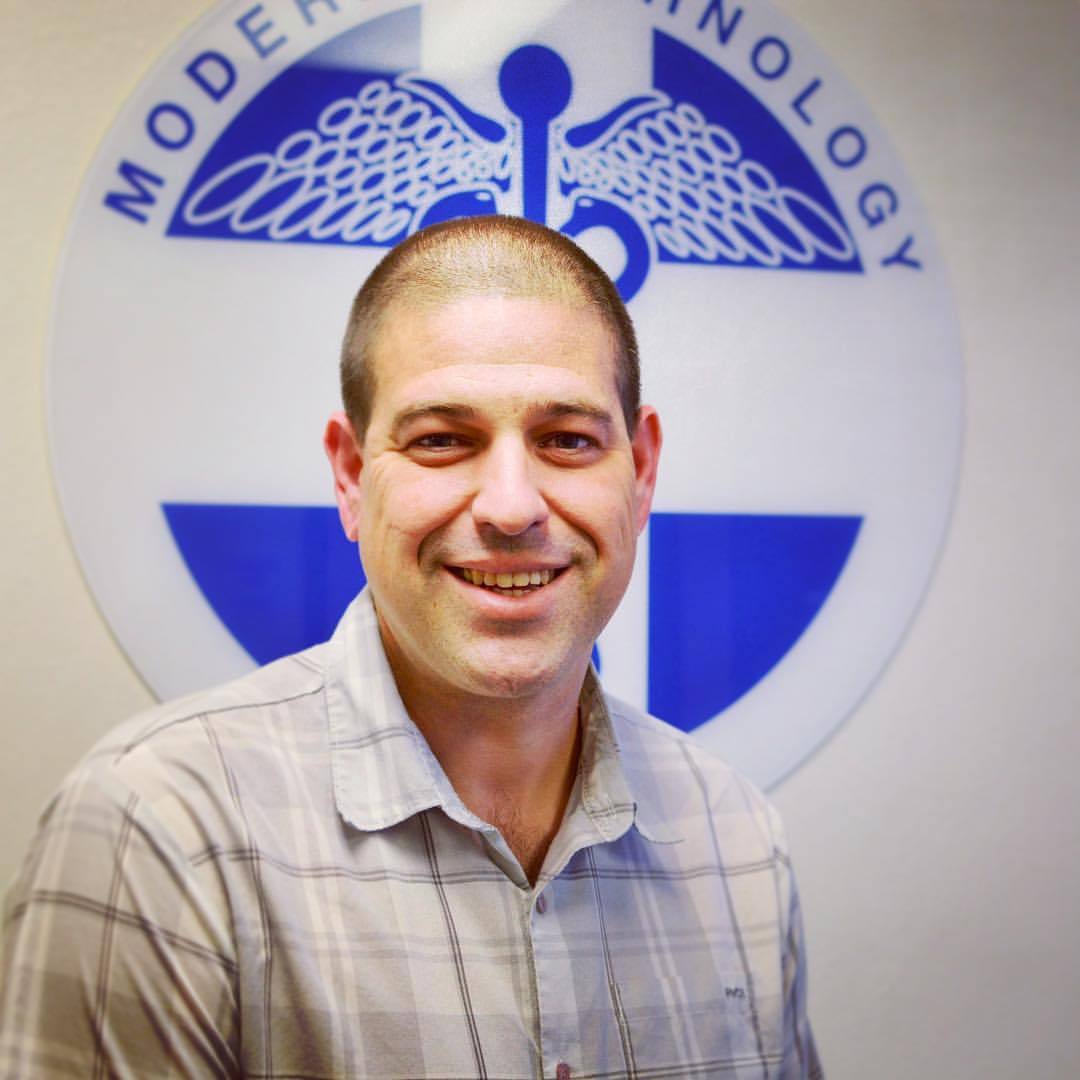
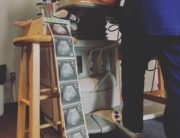
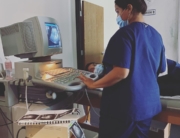
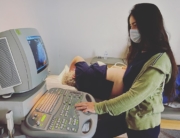
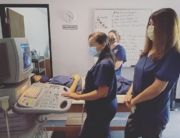
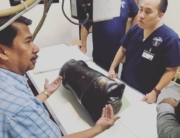
Recent Comments